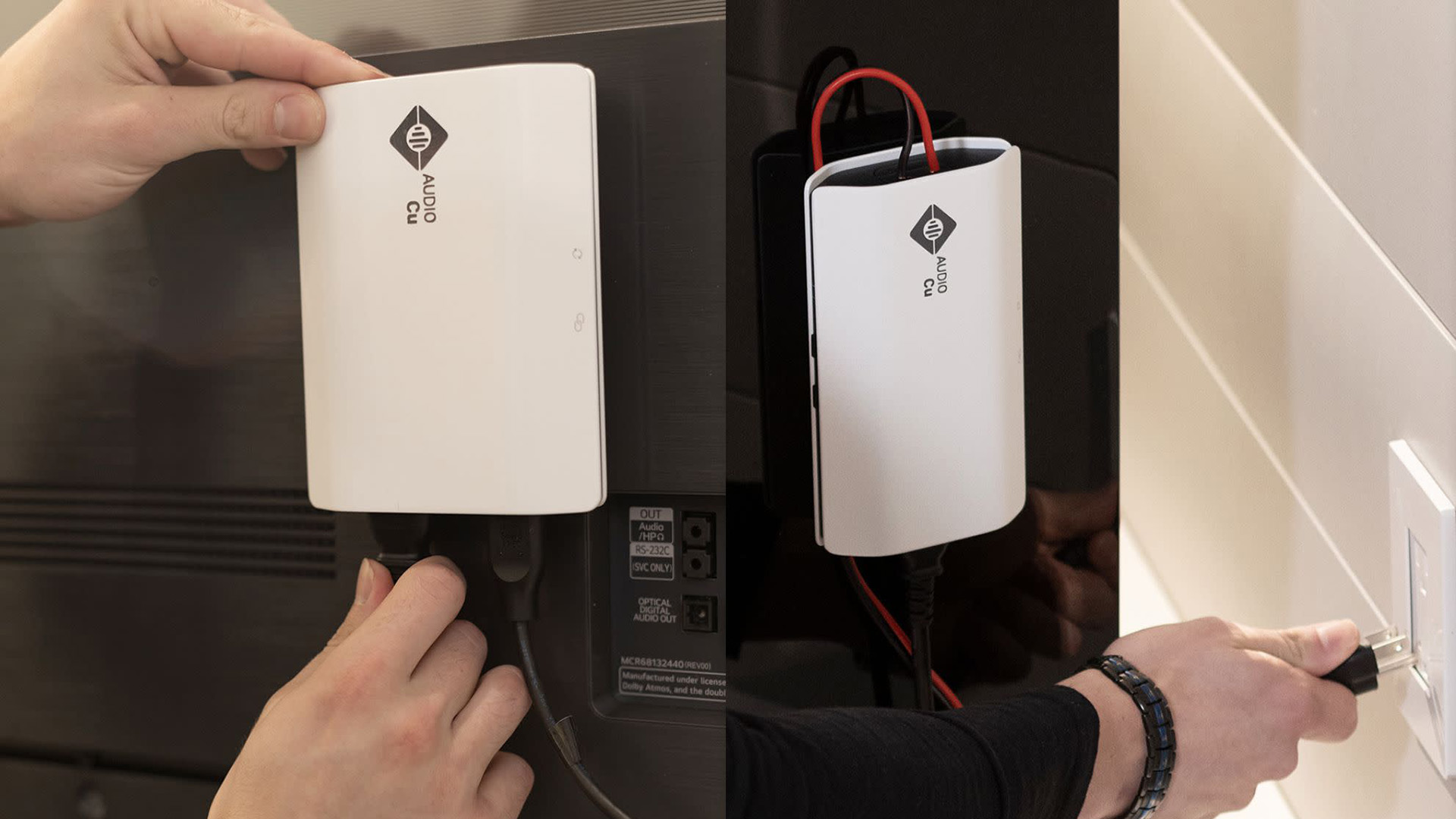

Quick Summary
Audio Cu is essentially powerline networking for your surround sound speakers.
It's currently US-only and the equipment is rather expensive, but it could be the ideal answer if you want to run up to Dolby Atmos audio over a larger distance.
One of the big irritations with surround sound, such as Dolby Atmos, is running all the speaker wires. Even in a standard room that's a lot of speakers to connect, while in a more unusual layout, it can be a real pain.
However, a new system called Audio Cu could solve that by bringing (technically) wireless connectivity to your home cinema setup.
If you're familiar with powerline networking, which transmits data via your home's electrical wiring, this is essentially the same thing but for audio. Audio Cu's transmitters and receivers enable you to send up to 10 separate channels of Dolby Digital, Dolby Atmos or Dolby TrueHD audio around your home without losing audio quality.
The system supports eARC and ARC, sending the full signal to all of your speakers instantaneously.
Does Audio Cu deliver decent audio without wires?
Dolby has certified the tech, so it's got the official stamp of approval, and Fasetto, the system's creator, says that Audio Cu delivers your sound without interference from other devices. That includes when home appliances are also working, as they are famously bad for adding noise to electrical circuits. Audio Cu can detect and remove that, the company claims.
The big benefit over other wireless systems that you'll find in devices such as the best soundbars with wireless surround speakers is that this isn't manufacturer-specific – so you can have whatever speakers, soundbars and subs you want on your system and connect them all via Audio Cu. And, because the system is largely wireless, you can easily reposition your setup without a great deal of hassle.
The "largely" prefix is important though, because there are still wired connections here. You need to connect each of your speakers to Audio Cu's transmitters and receivers. But that's short run and doesn't require the drilling or routing that longer cabling would require.
Get all the latest news, reviews, deals and buying guides on gorgeous tech, home and active products from the T3 experts
The big limitation right now is that the hardware is not exactly cheap.
It's only currently available through certified US contractors and, according to Digital Trends, each transmitter is $800 (about £630) and the receiver is $400 (£315).
You need a transmitter for your TV, and then one receiver for each subwoofer or speaker you want to connect. So, for a 7.1.2 Atmos setup, you're looking at $4,800 (£3,790) in connectivity. And that doesn't include the cost of your speakers.
Still, if you have a big room and the source is away from your amplifier, say, this could be a way to get up and running without the need to re-cable.
Writer, musician and broadcaster Carrie Marshall has been covering technology since 1998 and is particularly interested in how tech can help us live our best lives. Her CV is a who’s who of magazines, newspapers, websites and radio programmes ranging from T3, Techradar and MacFormat to the BBC, Sunday Post and People’s Friend. Carrie has written more than a dozen books, ghost-wrote two more and co-wrote seven more books and a Radio 2 documentary series; her memoir, Carrie Kills A Man, was shortlisted for the British Book Awards. When she’s not scribbling, Carrie is the singer in Glaswegian rock band Unquiet Mind (unquietmindmusic).
